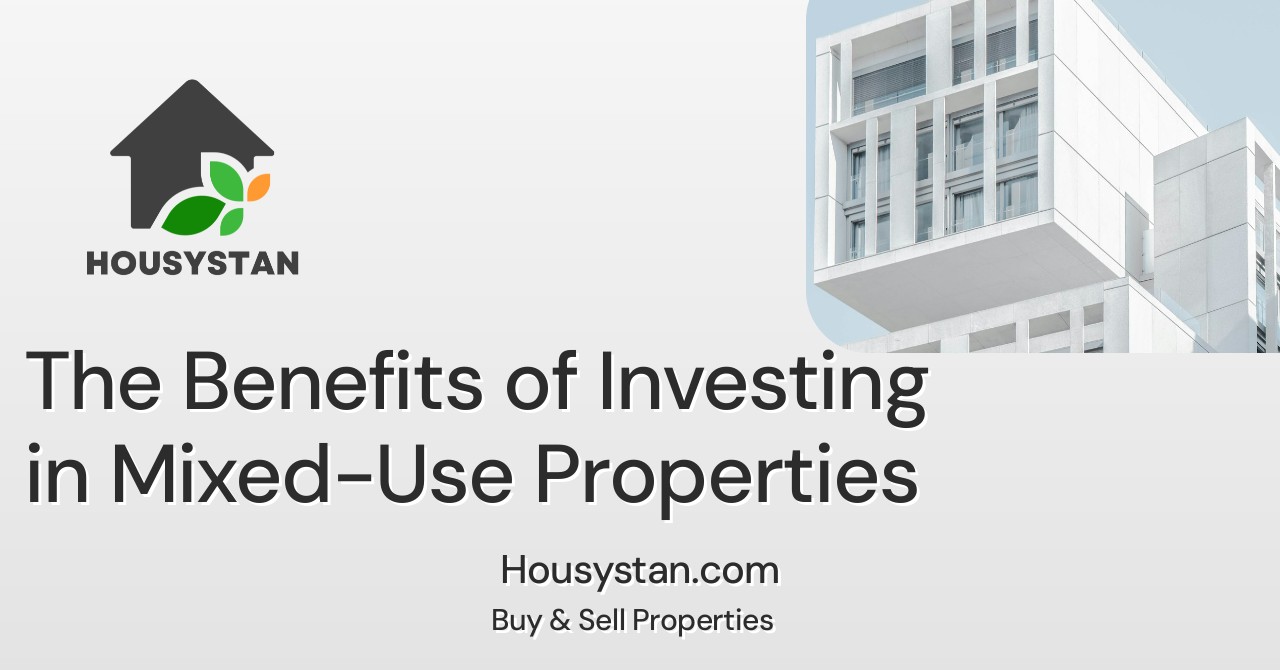The Benefits of Investing in Mixed-Use Properties
Read latest blogs and articles from Housystan

The Information mentioned here was last updated on:
27/11/2025The Benefits of Investing in Mixed-Use Properties
Investing in real estate has long been a popular strategy for building wealth, but not all real estate investments are created equal. One category that is rapidly gaining popularity among investors is mixed-use properties. These properties combine residential, commercial, and sometimes even industrial spaces within a single development, offering a range of benefits that set them apart from traditional real estate investments.
Understanding Mixed-Use Properties
- Verified Tenants/Buyers
- Unlimited Property Listing
- Zero subscription/charges fee
Before delving into the advantages, it's important to understand what mixed-use properties are. These are developments that integrate different types of spaces, such as apartments, offices, shops, restaurants, and sometimes light industrial spaces. This blend creates a dynamic environment where people can live, work, and play all within one area, fostering a sense of community and convenience.
Diversified Income Streams
One of the most significant benefits of investing in mixed-use properties is the potential for diversified income streams. Because these properties host multiple types of tenants, investors can benefit from both residential lease agreements and business rentals. This diversity can help stabilize revenue, as the risk is spread across different segments. If one sector experiences a downturn, such as a decrease in residential demand, the commercial side can often balance this out.
Increased Demand and Lower Vacancy Rates
Mixed-use properties are often located in vibrant, metropolitan areas where demand for convenient, multifaceted living spaces is high. People today prioritize proximity to amenities, and mixed-use developments cater to this preference by combining various aspects of urban life. As a result, these properties often enjoy lower vacancy rates than single-use buildings. Tenants are attracted to the lifestyle benefits offered by mixed-use developments, leading to relatively stable occupancy levels.
Cost Efficiency and Shared Resources
Mixed-use projects can take advantage of shared infrastructure and resources, which leads to cost efficiency. For instance, utilities, maintenance services, and security can be spread across the various segments of the property, reducing overall operational costs. This shared economy within the property not only makes maintenance more manageable but also enhances the long-term value of the investment.
Urban Revitalization and Increased Property Value
Developing or investing in mixed-use properties often plays a role in revitalizing urban areas. These projects can breathe new life into older neighborhoods, boosting the overall desirability and property values of the area. As these properties attract businesses and residents, the local economy receives a boost, drawing in more people and fostering further development and improvements. This cycle often leads to increased property values over time, offering investors the potential for significant appreciation.
Sustainability and Reduced Environmental Impact
Modern mixed-use developments often incorporate sustainable building practices and eco-friendly designs. By creating spaces where people can live, work, and shop within a walkable area, these developments reduce the need for transportation, subsequently lowering the carbon footprint. The incorporation of green spaces, energy-efficient buildings, and sustainable resource management further enhances the appeal of mixed-use properties to environmentally conscious tenants and investors alike.
Community Building and Enhanced Lifestyle
Mixed-use properties foster a sense of community that can be a crucial selling point for potential tenants and buyers. By integrating residential spaces with commercial and social areas, these developments create a community dynamic where residents are more likely to engage with their neighbors and local businesses. This sense of belonging can lead to a more enriched lifestyle, attracting long-term tenants who value connectivity and community engagement.
Availability of Funding
Financing mixed-use properties can be more attractive to lenders compared to single-use properties due to the diversified income streams and the lower risk associated with multiple types of tenants. Investors may find that obtaining loans and financing for mixed-use projects can be more straightforward and with better terms, given their typically stable cash flows and lower default risks.
Adaptability to Market Changes
Mixed-use properties offer adaptability to changing market trends. Retail spaces can shift their focus from traditional stores to service-focused businesses or experiences such as gyms and cafes as consumer preferences evolve. Office spaces can adapt to start-ups and co-working shifts, while residential units can cater to various demographics by integrating amenities that appeal to younger or more mature renters. This flexibility allows mixed-use properties to remain relevant and profitable even as market demands change.
The Allure to City Planners and Policies
Municipalities often encourage the development of mixed-use spaces due to their numerous benefits to urban planning, such as reduced urban sprawl and improved land utilization. City planners may provide incentives, such as tax abatements or zoning relaxations, to developers who prioritize mixed-use developments. This can make investing in mixed-use properties more attractive from a cost and regulatory standpoint.
Conclusion: An Ever-Present Opportunity
Investment in mixed-use properties presents an intriguing opportunity set enhanced by stability, community growth, and economic viability. By understanding these benefits, investors can make informed decisions that align their portfolios with evolving urban trends and lifestyle demands. Mixed-use developments, with their combination of residential, commercial, and recreational spaces, serve as microcosms of contemporary urban life, promising investors not only financial returns but a stake in the sustainable and vibrant future of real estate.